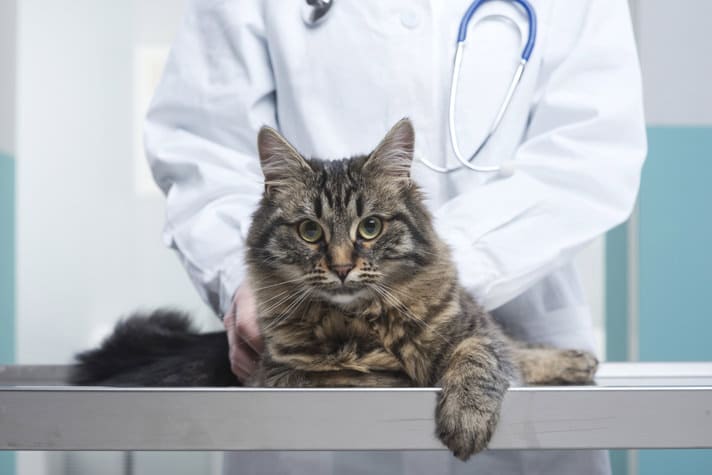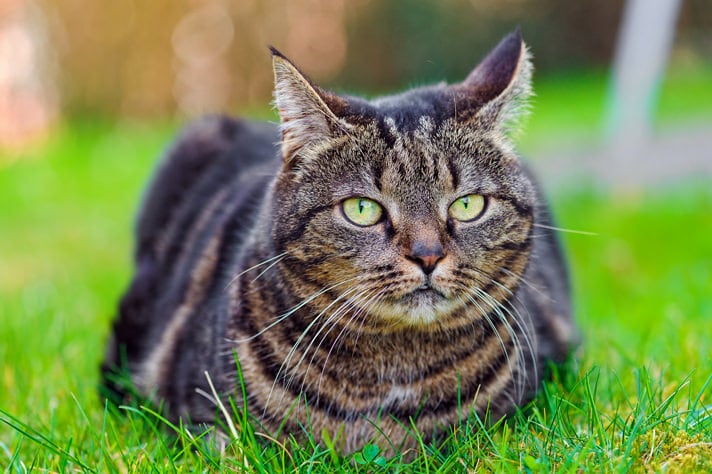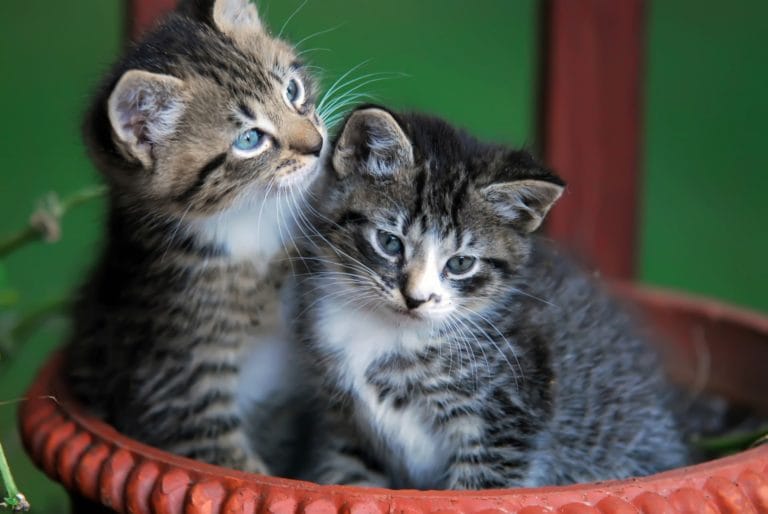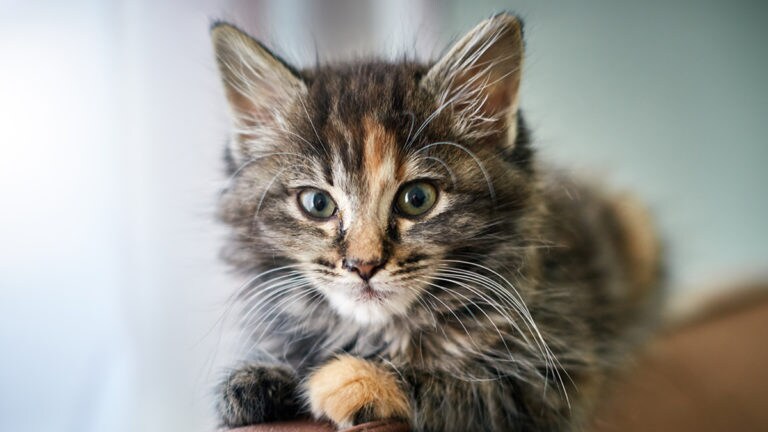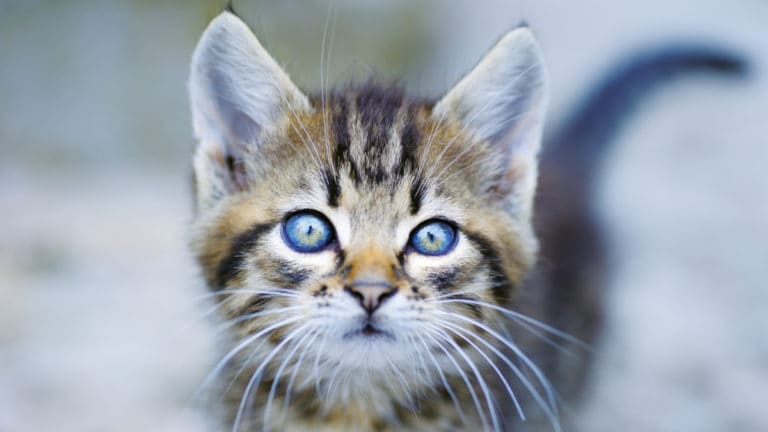“Happy Birthday to Spots,” the card in your email inbox reads. Along with the card came a reminder from your veterinarian that your cat is due for her first round of adult vaccinations. Tucked in with this helpful notice is another reminder that your cat still hasn’t been spayed, and that now would be a good time to do it.
You had kind of forgotten about this. The veterinarian had reminded you several times during her kitten vaccines that it was time to think about spaying her, but life was busy — the kids were just starting school again, then the holidays came and went, and life really got in the way of that all-important visit. Besides, Spots is strictly indoors and there is no chance of her getting pregnant, so it really isn’t necessary, right? It might be an expense you can skip even now, can’t it?
Benefits From Spaying Or Neutering Your Adult Cat
Well, as Spots gets a little older, it actually becomes increasingly important that we get that surgery scheduled. Perhaps the most important reason, and one that many people are not aware of, is the fact that the hormones that drive the heat cycle (and the constant meowing and tail “flagging”) are also able to prime the breast tissue into changes over time that may result in breast cancers. Obviously, the best time to avoid the hormones is before they start, but we do get some benefits right up until the age of 2.
Male cats also suffer from hormonally mediated cancer in the form of testicular cancer, and neutering them at any age completely eliminates this risk.
Another huge benefit in females is the prevention of uterine infections, called pyometra. These are increasingly common as cats experience multiple heat cycles, and they are completely avoided if a cat is spayed at any age. Pyometra is a potentially fatal disease — but one that is preventable. Each time your kitty experiences heat, her risk of pyometra goes up — so let’s nip that in the bud! Spaying also prevents the development of ovarian and uterine tumors, just as neutering prevents the risk of testicular cancer.
Lastly, we have the more well-known benefits. Clearly we don’t need to worry about Spots getting pregnant if she has been spayed, and there also is a significant reduction in, or elimination of, many problem behaviors (yowling, seeking to escape, restless behavior) that are commonly associated with the hormones from a heat cycle.
From the male cat perspective, we significantly reduce the incidence of spraying urine in the house after they have been neutered.
From a personal perspective, one of the reasons I became a veterinarian was from a childhood experience with a pyometra. My parents were of the generation that learned indoor cats did not need to be spayed or neutered since they wouldn’t become pregnant. Back then, no one really understood the link between infections, cancers and behavior problems. Therefore, my childhood indoor cats were not altered. The day my first cat — Snowflake, a beautiful white cat — was diagnosed with a pyometra and had to undergo an emergency surgery is forever etched in my mind. I remember sitting in the waiting room and crying, not knowing if she would survive. But we’ll get back to Snowflake later.
How Old Is Too Old?
Is there a point where a cat is too old to be spayed or neutered? The honest answer is no. No matter what the age, with caution and preparation, even cats in their late teens can successfully be altered.
In most every instance, the veterinarian will require blood work before doing surgery on a mature cat. This allows some assurances that the liver and kidneys are healthy and able to process the anesthetics used for the procedure. Some veterinarians also check your cat’s clotting ability pre-operatively with a blood test. If your adult cat is on the older side (for most veterinarians, over the age of 5), a thyroid gland check may be recommended or required as well.
For the female cat, most veterinarians will place an IV catheter into the front paw the morning of surgery. Much like an IV in humans, this allows the veterinarian to give medications quickly by delivering them right into the blood stream. It’s also used to administer fluids, which will help maintain kitties’ blood pressure.
Because the procedure is both quicker and simpler in the male cat, an IV catheter is not always placed, but it still may be recommended as a safety factor.
What Happens During A Spay Or Neuter Surgery?
When you drop Spots off for surgery, what actually happens?
Generally, the veterinary technician will look your kitty over and collect vitals, such as the temperature, heart rate and blood pressure, as well as draw some blood to run the tests requested by the veterinarian. The vet will also look over your kitty to be sure he or she is healthy enough to have the procedure done that day. Assuming everything (including lab work) is normal, your cat will be sedated with an injection, and the IV catheter will be placed (if needed) in a shaved area on the front paw.
Particularly for adult and older cats, most veterinarians use what is called a “balanced anesthetic plan,” which means that the cat is given a very tiny dose of many different medications. This helps to avoid concerns about an overdose, but it also means that we can glean all of the benefits of these drugs while minimizing their side effects. These medications include several different pain medications and sedatives, and soon, Spots is sleeping very comfortably.
If you have a female cat, the veterinary team will place a breathing tube to help protect the airway and allow them to deliver anesthetic gas to keep her sleeping throughout the procedure. Most males will not need to have the endotracheal tube placed because their procedure is shorter and simpler. All cats, though, will also be hooked up to monitoring equipment to monitor their heart rate, respiration rate, blood pressure, EKG tracing and several other factors.
For the girls, the entire surgery will be done by the veterinarian through a 1- to 2-inch incision near her belly button. The ovaries and the uterus will be removed from this one incision. Most times, this is closed “from the inside” with absorbable sutures, meaning there is nothing there for her to pick at when she goes home. Still, she most likely will need to wear an e-collar for a few days to be sure she doesn’t excessively groom the area.
For the boys, the incisions are made directly over the scrotum, and each testicle is removed through one tiny incision, which doesn’t even need to be sutured shut.
Post-Op Recovery
After surgery, your cat will likely go home with several medications for pain. It’s particularly important to give these medications to older cats, since they to tend to notice the soreness a little bit more than the kittens and youngsters do. However, with good pain medication, even a mature cat will bounce back completely from surgery within a few days, in most instances. If your veterinarian noticed some changes in the uterus or some early signs of infection, which can be common in adult kitties, they may also send home some antibiotics just to be sure that an infection does not develop post-operatively.
Going home instructions will include recommendations to check the incisions every day, and to keep your cat quiet and less active than normal. These can be hard rules to enforce, but mature kitties are a little bit slower to heal than kittens, and it’s important to give their body every leg up we can for the first few weeks after surgery. Follow these rules carefully and remember to call your veterinarian if you have any questions or concerns. It’s always better to ask than to find out later that you should have asked!
Speaking of infections, remember Snowflake, my childhood kitty that required the emergency surgery for a uterine infection? Fortunately, she recovered uneventfully from her procedure. However, her sister cat, Pussycat, also developed a uterine infection a few months later. Tragically, she died on the operating room table. Having two pets develop such serious reproductive problems in a short period of time influenced me as a child to find a way to help prevent other cats from suffering. As I made my way through college and veterinary school, I became very aware that we can do a lot to prevent not only these infections, but also reproductive cancers and hormonally associated behavioral problems.
It is well within our abilities to spare our beloved pets these conditions, even if they were not spayed and neutered as kittens. Adult cats will go on to enjoy many more healthy, happy years to come if spayed and neutered. And next year’s birthday card will serve as a reminder that you took every step to help prevent disease in your beloved family member!
By: Dr. Sandra Mitchell
Featured Image: stokkete/iStock/Thinkstock
Share:
